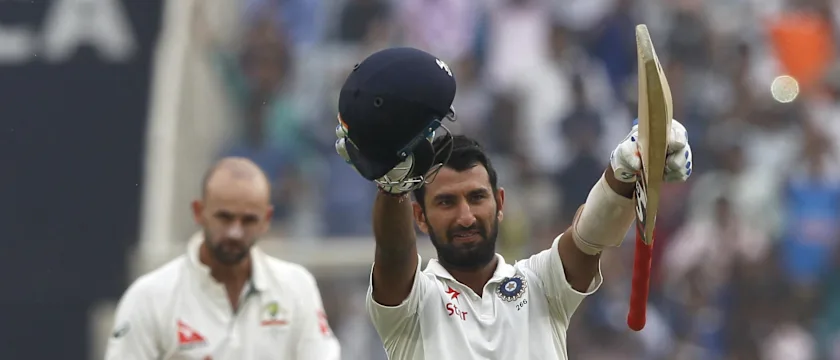Mace in India #9: Pujara, and the quieter cogs in the wheel

All of 672 minutes. Eleven hours. A record-breaking 525 balls faced.
Cheteshwar Pujara was patience personified against Australia in the third Test in Ranchi. His 202 runs were a lesson in grinding it out. His defence – priceless. No other Indian batsman had ever faced so many balls in a Test.
Virat Kohli would heap praise on the batsman after the drawn match. “People don't understand his importance so much in this team and what a valuable player he is for us,” the captain said. “Someone like that is priceless to have in the team.”
It was only one of several times in the past year that Pujara dropped anchor and became an immovable force for opposition teams. Against South Africa in the third Test in Johannesburg, he played out 53 deliveries before scoring his first run. The 50 off 179 balls that he finished with were significant not just in India’s innings and in the match context, but in that India’s 63-run win ensured that the mace remained with them.
Pujara finished the 2016-17 season as the highest run-getter, and only went from strength to strength. Since the New Zealand Tests in 2016, he has made 2014 runs at an average of 55.94 in 22 Tests – behind only Kohli (2309). His figures include seven centuries – including the double century against Australia – and 10 half-centuries.
As valuable and as understated as batsmen in the period during which India hit new heights in red-ball cricket were Wriddhiman Saha, the wicket-keeper batsman, and Murali Vijay, the opener.
In that same Ranchi game, when Saha joined Pujara, India were 328/6, still behind Australia's 451. The duo went on to add 199. But before that, it was Vijay’s 82 off 183 balls in an opening stand of 91 and his second-wicket partnership of 102 with Pujara that set the base. It all allowed India to declare with a 152-run first-innings lead.
India’s wicket-keeper has made two centuries and three half-centuries from the start of the New Zealand Tests. His partnerships with the tail were a bonus for India at home.
As for Vijay, despite India having several contenders for the opening slot, he has made a strong case to be an automatic pick. He is only after Kohli and Pujara on the runs charts, with five centuries and three half-centuries since September 2016.
Among the bowlers, even as spin held sway and R Ashwin and Ravindra Jadeja took most of the credit – and wickets – to script India’s dominance at home, Umesh Yadav was an unsing hero.
Despite the chopping and changing of the playing XI, especially among the pace bowlers, Yadav was a regular, featuring in 17 matches and picking up 41 wickets. He lifted his game against Australia, prising out top and middle-order batsmen. He saved his best for the last match of the series, bowling with fire and pace and bounce in helpful conditions in Dharamsala, providing the early nudges for a famous Indian victory.
Bhuvneshwar Kumar was the star among the pacemen, with Jasprit Bumrah a close second, in the Test series in South Africa. But at home, in conditions meant for spin, it was Yadav that Kohli turned to. Almost each time.
